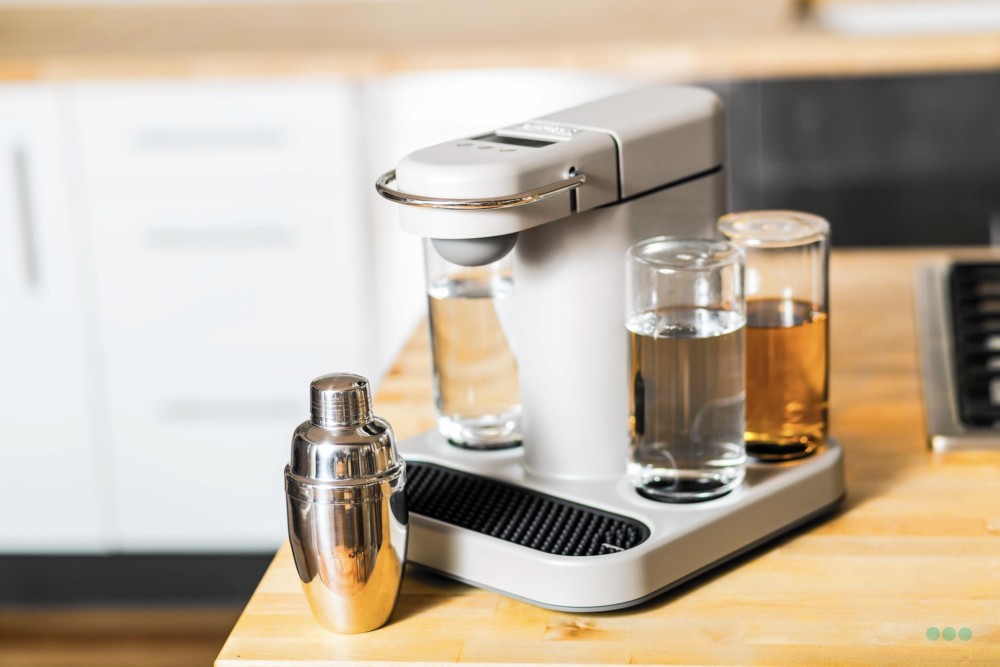By Greg Trotter
Chicago Tribune
WWR Article Summary (tl;dr) The easy to operate cocktail creator will likely appeal to those who host cocktail parties, enjoy gadgets or are simply looking for that special gift.
CHICAGO
Coming soon to a wedding registry near you: a machine that allows a person to insert a recyclable pod of concentrated liqueur, press a button, slide a glass into place and walk away with a stiff cocktail.
Beam Suntory announced Wednesday that it was taking a minority stake in Bartesian, a Canadian maker of what at first glance appears to be a Keurig machine for cocktails. For Beam Suntory, which is in the process of moving headquarters from suburban Chicago to the city’s downtown, the investment reflects the company’s willingness to invest in startups, a growing trend for large spirit companies.
For Bartesian, based in Waterloo, Ontario, the investment will enable the company to start selling its products in stores by as early as spring 2017, said Bartesian co-founder Ryan Close. Terms of the deal were not disclosed, but Close said Beam’s investment was in the “millions.”
More specifically, Beam Suntory’s involvement allows Bartesian cash flow for marketing and access to distribution, he said.
“We try hard to dispel the knee-jerk reaction when people think this is just a Keurig for cocktails,” said Close, 37. “We want to educate consumers before it hits the shelf, and this investment allows us to do that.”
The quality of the Bartesian machine and the ingredients in the capsules distinguish it from the Keurig, he said.
How it works: Human fills designated “reservoirs” for gin, vodka, rum and tequila with spirits of choice, then inserts a capsule containing concentrated juice, bitters or liqueurs. Machine reads the bar code on the capsule, indicates the recommended glass, asks human his or her desired strength and then mixes cocktail with the appropriate liquor. Human drinks drink.
The process takes 18 seconds, Close said. Suggested retail will be $299.
Close said his partner, co-founder Bryan Fedorak, first started tinkering with “crude prototypes” as an engineering student at the University of Waterloo. Over the past two years, they’ve focused on raising money and refining the product, he said.
The machine likely will appeal to those who host cocktail parties, enjoy gadgets or are looking for that special gift, he said.
“Everyone wants to be the cool uncle,” Close said.
For large companies in the food and beverage industries, it’s often cheaper and easier to invest in or acquire startups than to create new products.
“That’s definitely a major trend and it’s going to continue,” Close said.
Other spirits companies have made similar investments in small but promising companies. Diageo, the largest spirits producer in the world, set up an independent venture fund called Distill Ventures in 2013 that’s since invested in more than 10 companies, according to the fund’s website.
And Constellation Brands, a New York-based company with its beer business headquartered in Chicago, established its own in-house venture operation last year and invested in Chicago-based Crafthouse Cocktails, which makes ready-to-pour cocktails mixed with high-quality ingredients.
“At-home cocktailing is a multibillion dollar market, and we’ve been exploring innovation in this space for quite some time.
… We see the Bartesian solution as unique and superior to other products in the marketplace, and we look forward to supporting them on the path to commercialization in 2017,” said Beam Suntory Chief Strategy Officer Steve Fechheimer in a statement.
For spirits companies like Beam Suntory, finding effective ways to drive cocktail consumption at home is a “bit of a holy grail” because many consumers find making such drinks to be intimidating, said Tom Flocco, former CEO of Beam before its merger with Suntory.
“Anything that breaks that barrier down is a good thing,” said Flocco, who is now an adviser to venture capital group Spirits Investment Partners.
It can be difficult to perfect, though, he said.
“Like a lot of these technologies, it’s often a good idea in concept, but in practice it takes a long time for the technology to catch up with the application,” Flocco said.














































































































































































































































































































































































